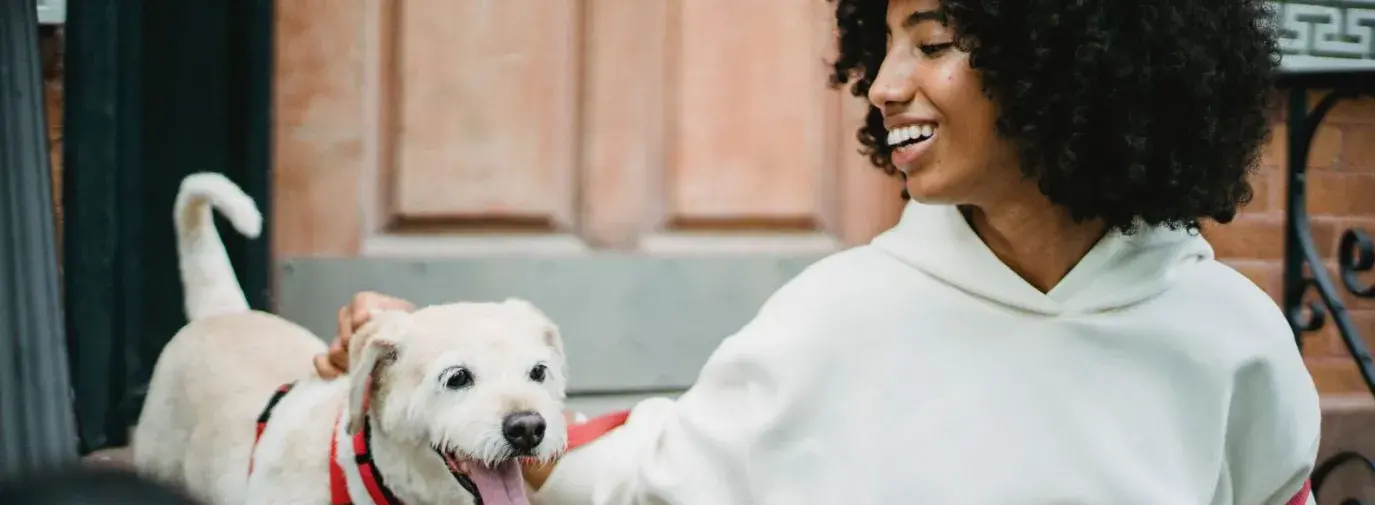
Pets make loyal companions, at your side through all seasons of life. But can they accompany you on the path toward a greener existence?
Yes! Taking steps toward sustainability now can make miles of a difference in the long run. First, adopt—don’t shop, and spay or neuter your pets.
Below, we answer common questions about eco-friendly pet ownership.
How should I handle waste?
Pick up after your pooch—even in your yard. Pet waste, if not properly disposed of, can threaten public health by wandering into waterways.
One approach is to bag and trash the doo. DC’s Department of Energy & Environment recommends “reusing old bread, produce, or newspaper bags.” While tossing biodegradable bags may sound greener, if they are headed for a landfill, they’ll get cut off from the oxygen they need to break down properly.
If you have the time and means, “a much better solution is to compost,” veterinarian Richard Pitcairn writes in Dr. Pitcairn’s Complete Guide to Natural Health for Dogs & Cats. Karl Schrass, founder of Annapolis Compost, agrees it’s feasible, but safety must come first. Seek expert advice on properly composting dog waste. Don’t “use that compost on plants that you will be eating,” Schrass warns. Pitcairn also suggests septic-style digesters like Doggie Dooley.
As for cat waste, some compostable litters do exist, but start by transitioning away from common materials like clay, which is sourced through strip mining, sustainability site Treehugger explains, and does not decompose.
Line cat boxes with bio-friendly corn, grass-seed, or walnut litter instead. If not composting with expert oversight, seal and trash used litter in a brown paper bag. It should not be composted normally because the parasite that causes toxoplasmosis is sometimes present in cat feces.
Can I make my pets greener eaters?
A 2017 UCLA study found cat and dog food is responsible for a quarter to a third of the environmental impact of meat consumption in the US. Churning out animal products—including resource-intensive pet food—strains Mother Nature. But is turning your pet vegan a safe solution?
For Pitcairn, the answer is (usually) yes. “For dogs, it is not only possible to eat much lower on the food chain, it’s a good idea,” he writes. He mentions Bramble, the collie whose intake of lentils, vegetables, and brown rice—among other vegan foods—helped her hit 25 years.
With cats, some maintain that a part-meat, part-plant diet is choice. But Pitcairn takes a different view, claiming that vegan diets designed to include synthetic supplemental nutrients can suit between 60% to 85% of felines.
Check out Animal Essentials treats and supplements. Remember: dietary switches require veterinary oversight.
Are there environmentally friendly toys?
According to an Integrative and Comparative Biology study, the majority of pet-care commodities involve single-use plastics. And given that America’s pet-product industry raked in nearly $100 billion last year, these goods definitely propel plastic overflow.
Cut down trash by curating your toy stash thoughtfully. Prioritize durable, plastic-free, and upcycled items.
Check out P.L.A.Y. and Purrfectplay for your toy and accessory needs.
What about bugs?
Disconcertingly, many EPA-approved pet pesticides contain perilous ingredients, according to the National Resources Defense Council. Products can stoke brain, organ, skin, or stomach issues. Plus, Pitcairn reminds us, toxins bleed into our biosphere.
Pitcairn endorses “nontoxic options for flea control, body care, and other household products.” Try Wondercide‘s natural flea and tick sprays and collars.
Leave only paw prints
Join other Green Americans in working toward eco-friendly pet ownership. Cutting back on plastic and toxic products not only benefits the earth but positions your pet to lead a healthier and happier life.







